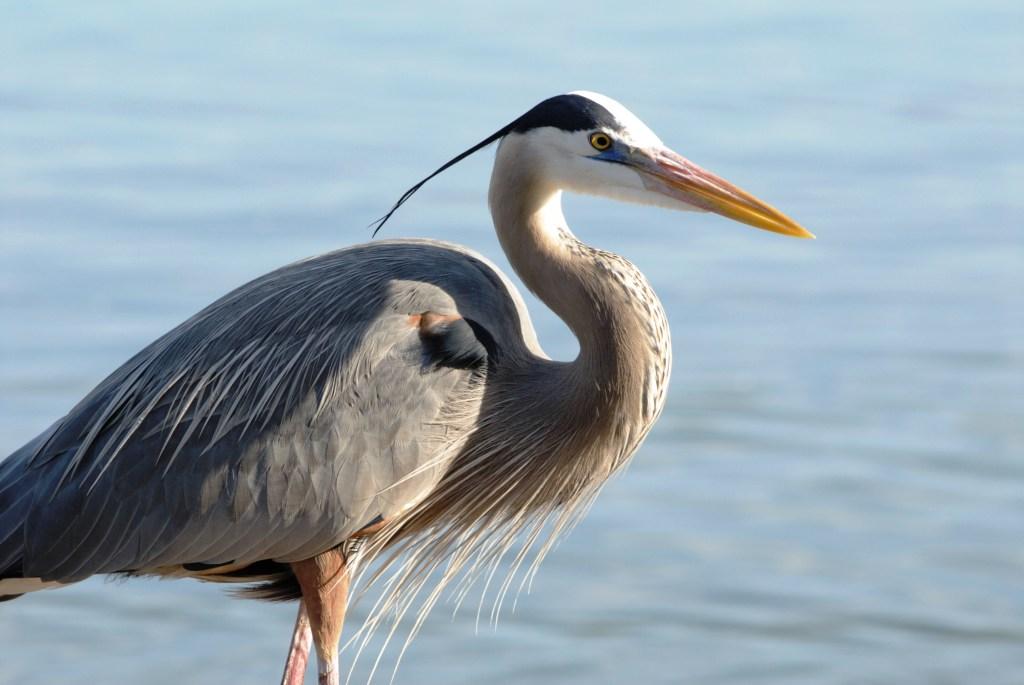Description
The primary food for Great Blue Heron is small fish, though it is also known to opportunistically feed on a wide range of shrimps, crabs, aquatic insects, rodents, other small mammals, amphibians, reptiles, and small birds. Herons locate their food by sight and usually swallow it whole. Herons have been known to choke on prey that is too large. It is generally a solitary feeder. Individuals usually forage while standing in water, but will also feed in fields or drop from the air, or a perch, into water. As large wading birds, Great Blue Herons are able to feed in deeper waters, and thus are able to harvest from niche areas not open to most other heron species.fish or frogs with its long, sharp bill.
It feeds in shallow water or at the water's edge during both the night and the day, but especially around dawn and dusk. It uses its long legs to wade through shallow water, and spears
It feeds in shallow water or at the water's edge during both the night and the day, but especially around dawn and dusk. It uses its long legs to wade through shallow water, and spears
Breeding
This species usually breeds in colonies, in trees close to lakes or other wetlands.
Habitat
It can be found in a range of habitats, in fresh and saltwater marshes, mangrove swamps, flooded meadows, lake edges, or shorelines, but always close to bodies of water, usually nesting in trees or bushes. They often nest in colonies.Conservations
Adult Great Blue Herons have few natural enemies. Eagles occasionally attack them, and crows, ravens, gulls, birds of prey, and raccoons prey upon the eggs and young; mortality of the young is high, but often for reasons other than predation.
Sources:


For more photos: http://www.google.com.sg/images?um=1&hl=en&biw=1659&bih=841&tbs=isch%3A1&sa=1&q=great+blue+heron&aq=f&aqi=g10&aql=&oq=&gs_rfai=



